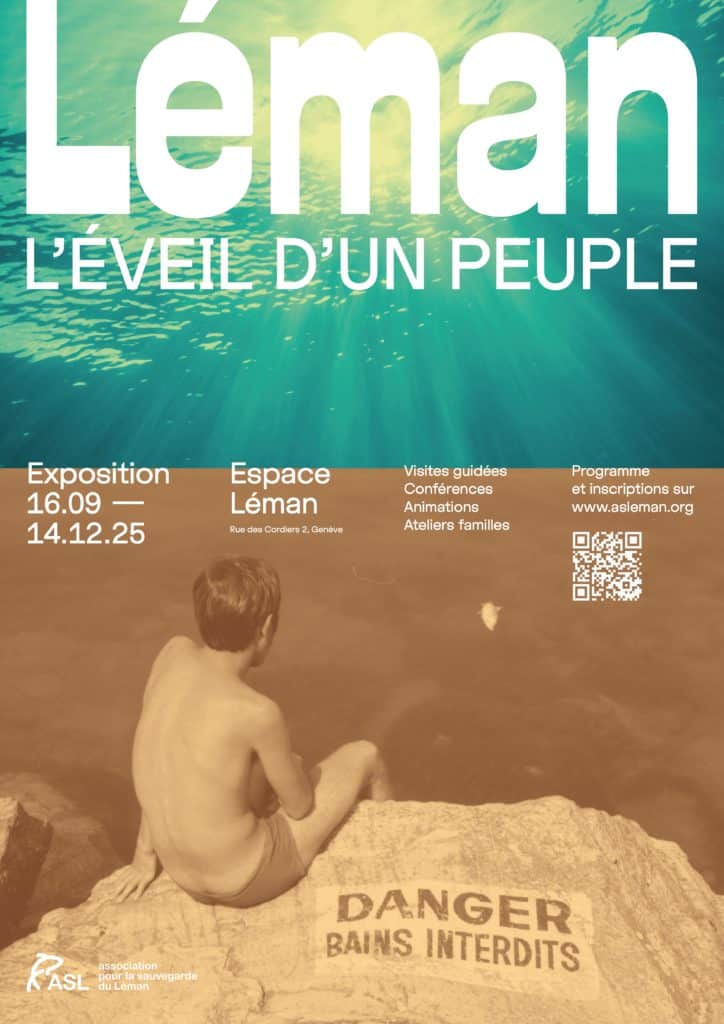"We others have the lake. It is vast, 𝗶𝗹 𝗮 𝗹'𝗮𝗶𝗿 𝗱'𝘂𝗻𝗲 𝗽𝗲𝗿𝗹𝗲 𝗮𝘂 𝗳𝗼𝗻𝗱 𝗱𝗲 𝘀𝗮 𝗰𝗼𝗾𝘂𝗶𝗹𝗹𝗲. The mountains and hills that border it rise up on all sides..."
The words of Charles-Ferdinand Ramuz illustrate a well-known landscape. The morphology of his "shell", however, is a little less familiar. Here are the details.
The history of Lake Geneva is primarily linked to the collision of the Adriatic and Eurasian tectonic plates. This collision raised the Alpine peaks and the folds of the Jura, but also caused the Franco-Swiss plateau to sink. 𝗖'𝗲𝘀𝘁 𝗹𝗲 𝗰𝗮𝘀 𝗱𝘂 𝗟𝗲́𝗺𝗮𝗻 𝗾𝘂𝗶 𝗮 𝘃𝗲́𝗰𝘂 𝘂𝗻 𝗮𝗳𝗳𝗮𝗶𝘀𝘀𝗲𝗺𝗲𝗻𝘁 linked to the formation of the Pre-Alps.
The tectonic influence remains marginal in explaining the relief of the Lake Geneva "shell". Instead, the scientific literature highlights the role played by glaciers. Thus, it is mainly 𝗹'𝗲́𝗿𝗼𝘀𝗶𝗼𝗻 𝗴𝗹𝗮𝗰𝗶𝗮𝗶𝗿𝗲 𝗾𝘂𝗶 𝗮𝘂𝗿𝗮𝗶𝘁 𝗰𝗿𝗲𝘂𝘀𝗲́ 𝗹𝗲 𝗹𝗮𝗰 that is responsible for some of its 𝗽𝗮𝗿𝘁𝗶𝗰𝘂𝗹𝗮𝗿𝗶𝘁𝗲́𝘀.
For example, 𝗹𝗲𝘀 𝗴𝗿𝗮𝗻𝗱𝗲𝘀 𝗹𝗶𝗴𝗻𝗲𝘀 𝘇𝗲́𝗯𝗿𝗮𝗻𝘁 𝗹𝗲𝘀 𝗳𝗼𝗻𝗱𝘀 between the small and large lakes would have been formed by large boulders trapped in the lower glacial layers. The advancing Rhône glacier would have carried these large boulders with it, "grating" the bottom of the lake.
While the Rhône glacier hollowed out the Lake Geneva "shell", it also filled it with sediment as it retreated. Today, 𝗹𝗲 𝗳𝗼𝗻𝗱 𝗱𝘂 𝗹𝗮𝗰 𝗽𝗼𝘀𝘀𝗲̀𝗱𝗲 𝘂𝗻𝗲 𝗽𝗿𝗼𝗳𝗼𝗻𝗱𝗲𝘂𝗿 𝗺𝗮𝘅𝗶𝗺𝗮𝗹𝗲 𝗱𝗲 𝟯𝟬𝟵𝗺, 𝘀𝗼𝗶𝘁 𝟴𝟲 𝗰𝗺 𝗱𝗲 𝗺𝗼𝗶𝗻𝘀 𝗾𝘂'𝗶𝗹 𝘆 𝗮 𝟭𝟮𝟱 𝗮𝗻𝘀. This loss of depth is explained by the deposition of sediments carried by the tributaries of Lake Geneva.
Other more specific remains can be explained by a combination of factors. For example, 𝗹𝗲 𝗿𝗲𝗹𝗶𝗲𝗳 𝗶𝗺𝗺𝗲𝗿𝗴𝗲́ 𝗱𝘂 𝗛𝗮𝘂𝘁-𝗠𝗼𝗻𝘁 between Corsier and Versoix is a former mound of uneroded molasse on which a significant layer of sediment has been deposited. In another case, 𝗹𝗲𝘀 𝗳𝗶𝗻𝗲𝘀 𝗰𝗼𝗹𝗹𝗶𝗻𝗲𝘀 𝘀𝗼𝘂𝘀-𝗹𝗮𝗰𝘂𝘀𝘁𝗿𝗲𝘀 off Coppet are former glacial tunnels, filled in during deglaciation.
If you'd like to find out more anecdotes about the morphology of Lake Geneva, visit our website to (re)discover the glacial origin of 𝗽𝗶𝗲𝗿𝗿𝗲𝘀 𝗱𝘂 𝗡𝗶𝘁𝗼𝗻 in Geneva (60s n° 44), the formation of 𝗿𝗮𝘃𝗶𝗻𝘀 𝘀𝗼𝘂𝘀-𝗹𝗮𝗰𝘂𝘀𝘁𝗿𝗲𝘀 at the mouth of the Rhône (60s n° 61) or another version of the appearance of Lake Geneva mixing the 𝗴𝗲́𝗮𝗻𝘁 𝗚𝗮𝗿𝗴𝗮𝗻𝘁𝘂𝗮 (60s n° 16).

Photo credits :
![]() Swisstopo
Swisstopo![]() Jean-Louis Lods
Jean-Louis Lods
Sources :
– Girardclos, Corboud, Wildi (2015)Limno-geological cruise on Lake Geneva: geological history of the Lake Geneva basin and human occupation". University of Geneva (online)
- J.F. Ramuz, Diary, 1902, in Lémaniques n°100
– Le Temps (2016)The mysteries revealed at the bottom of Lake Geneva".


